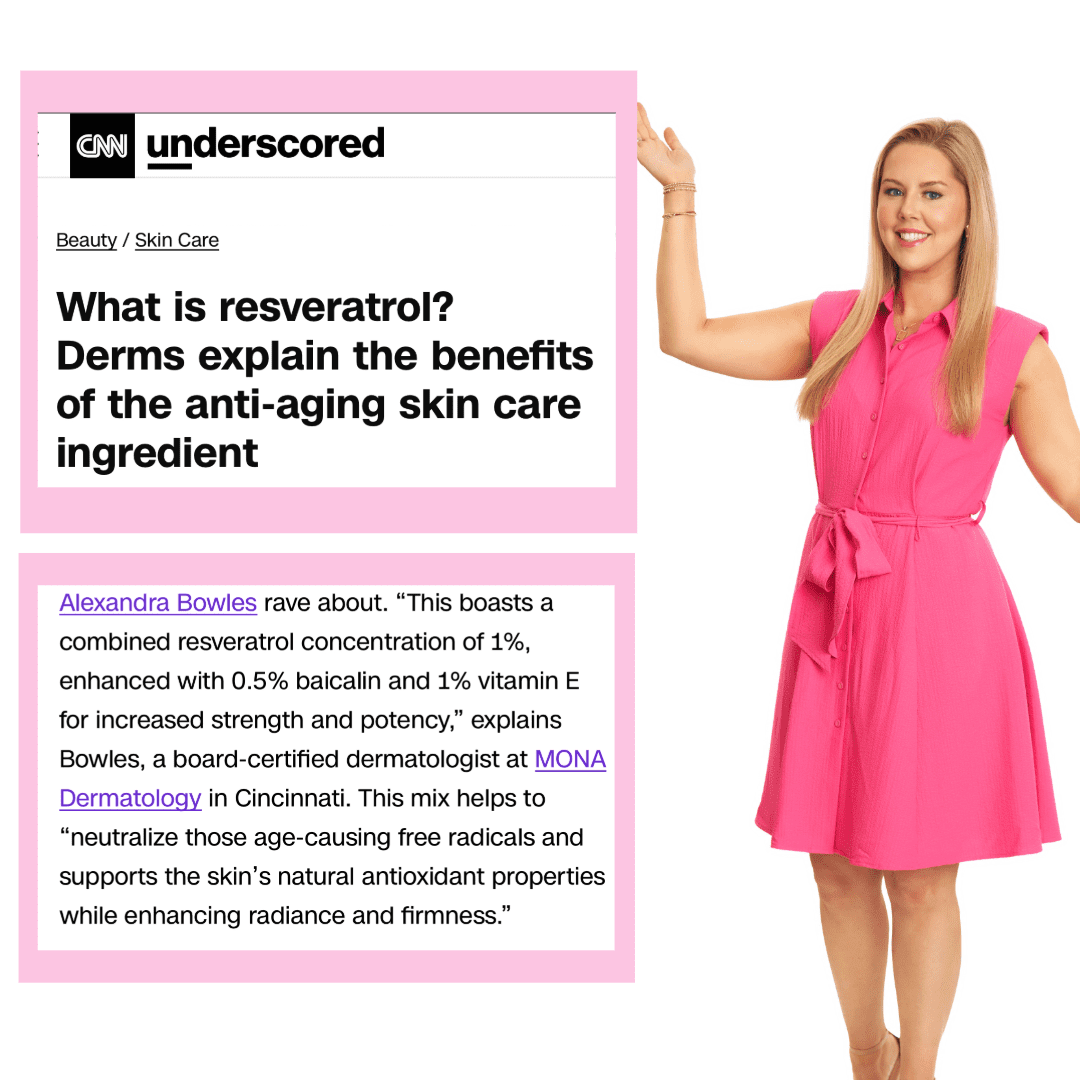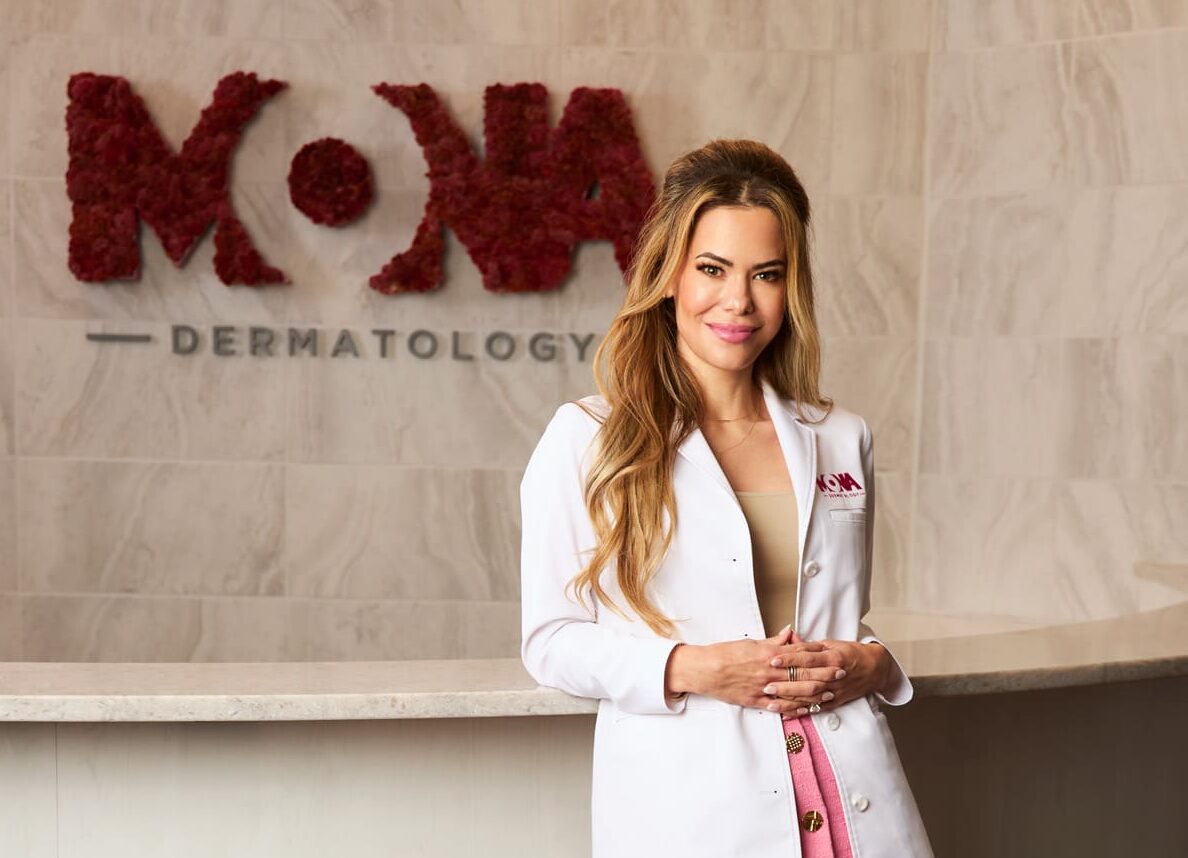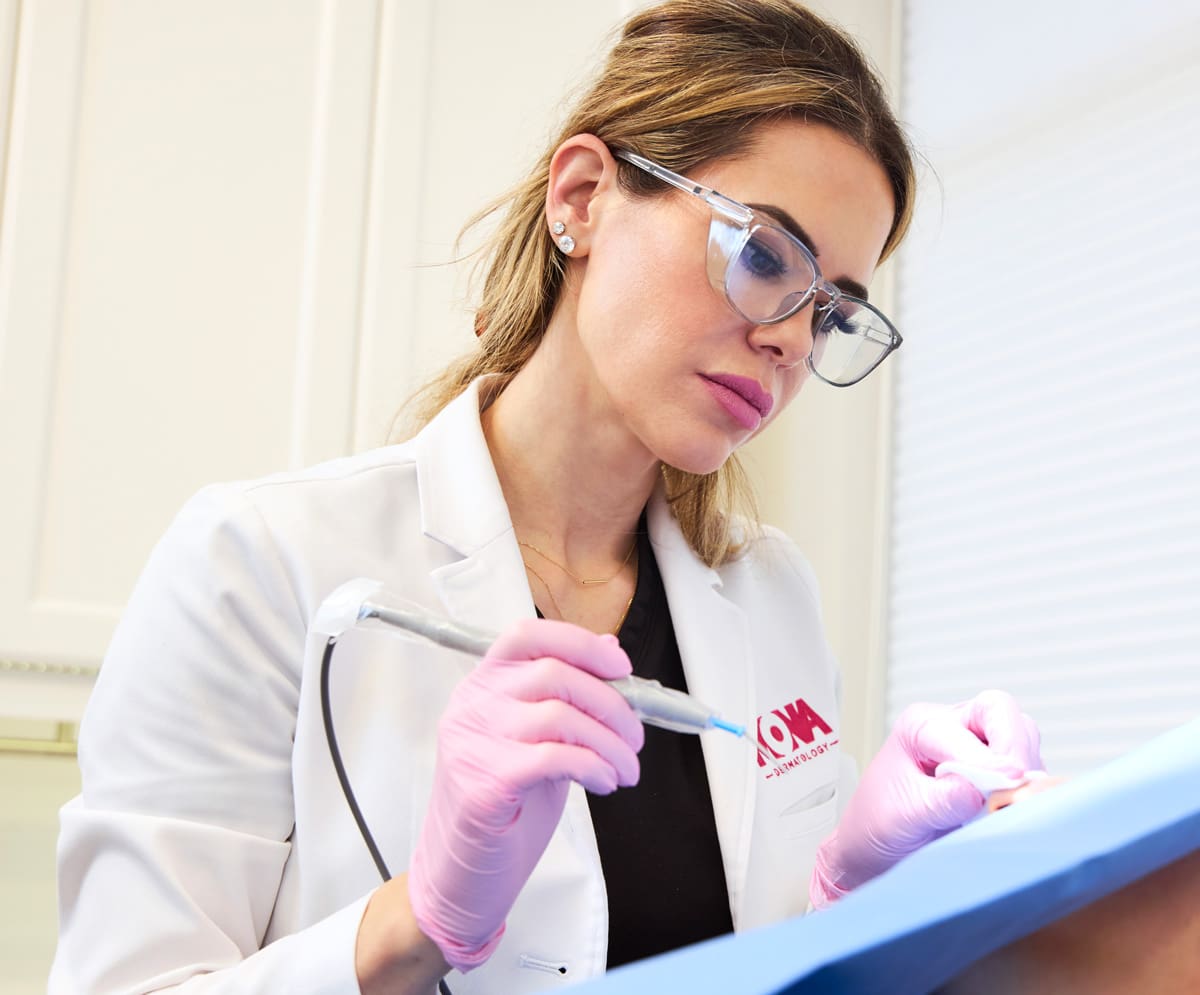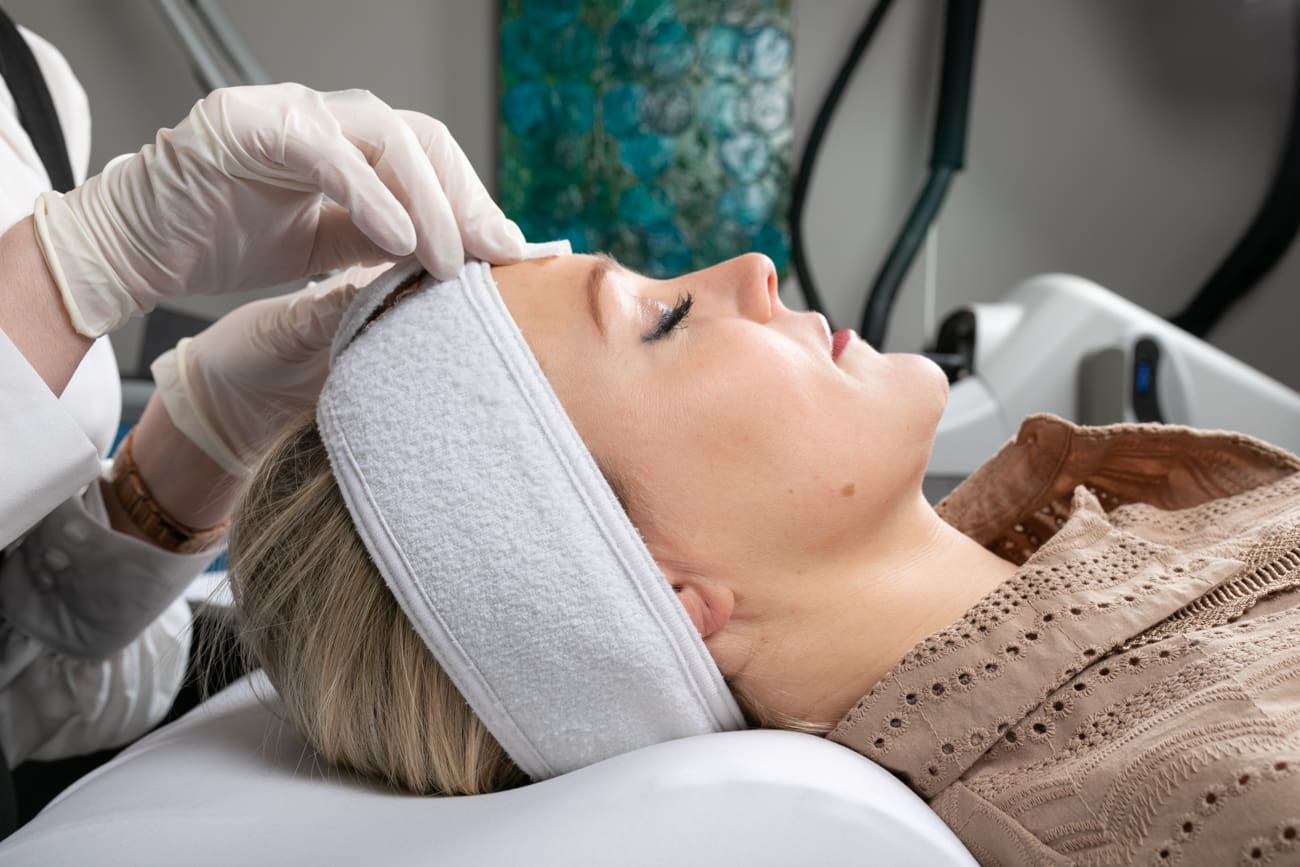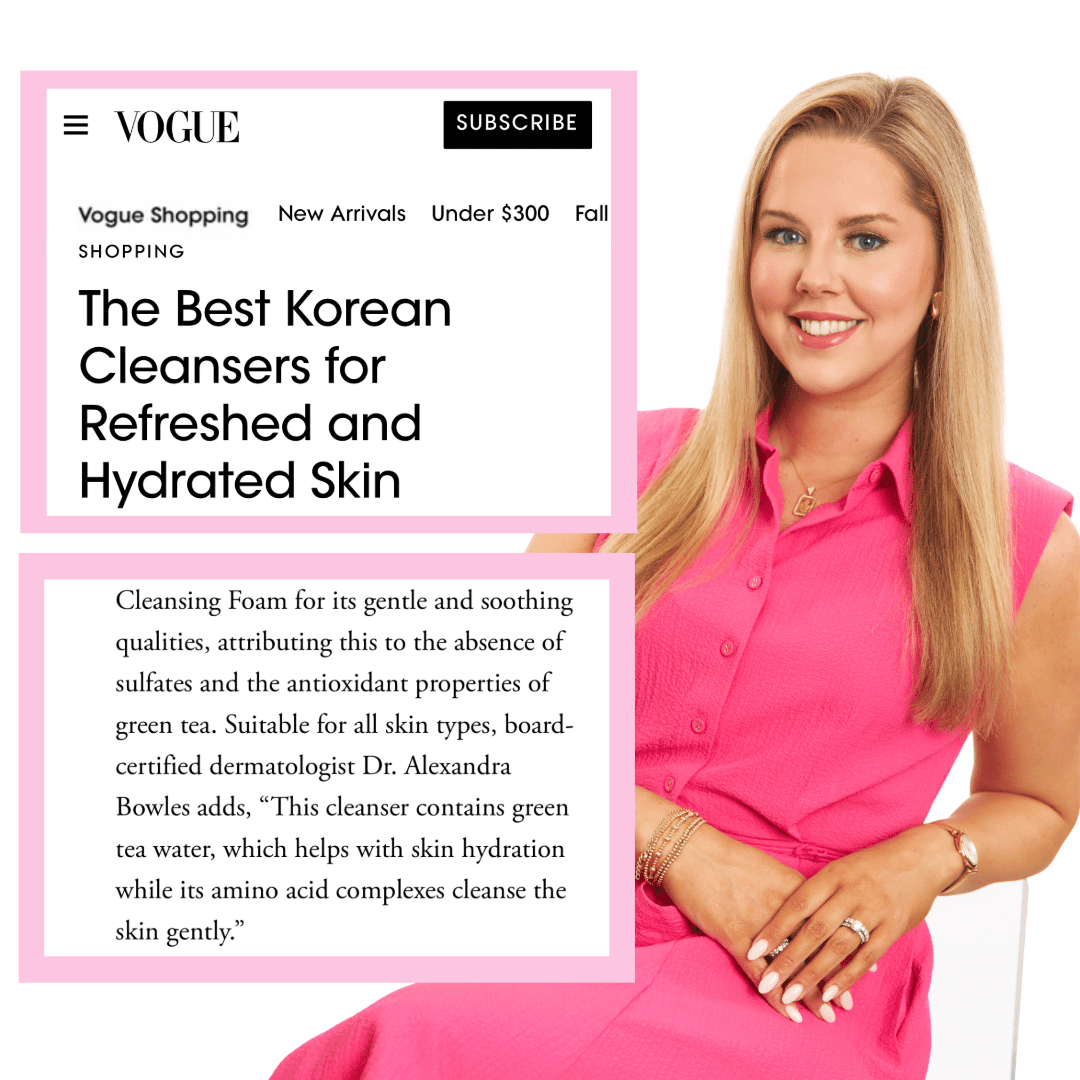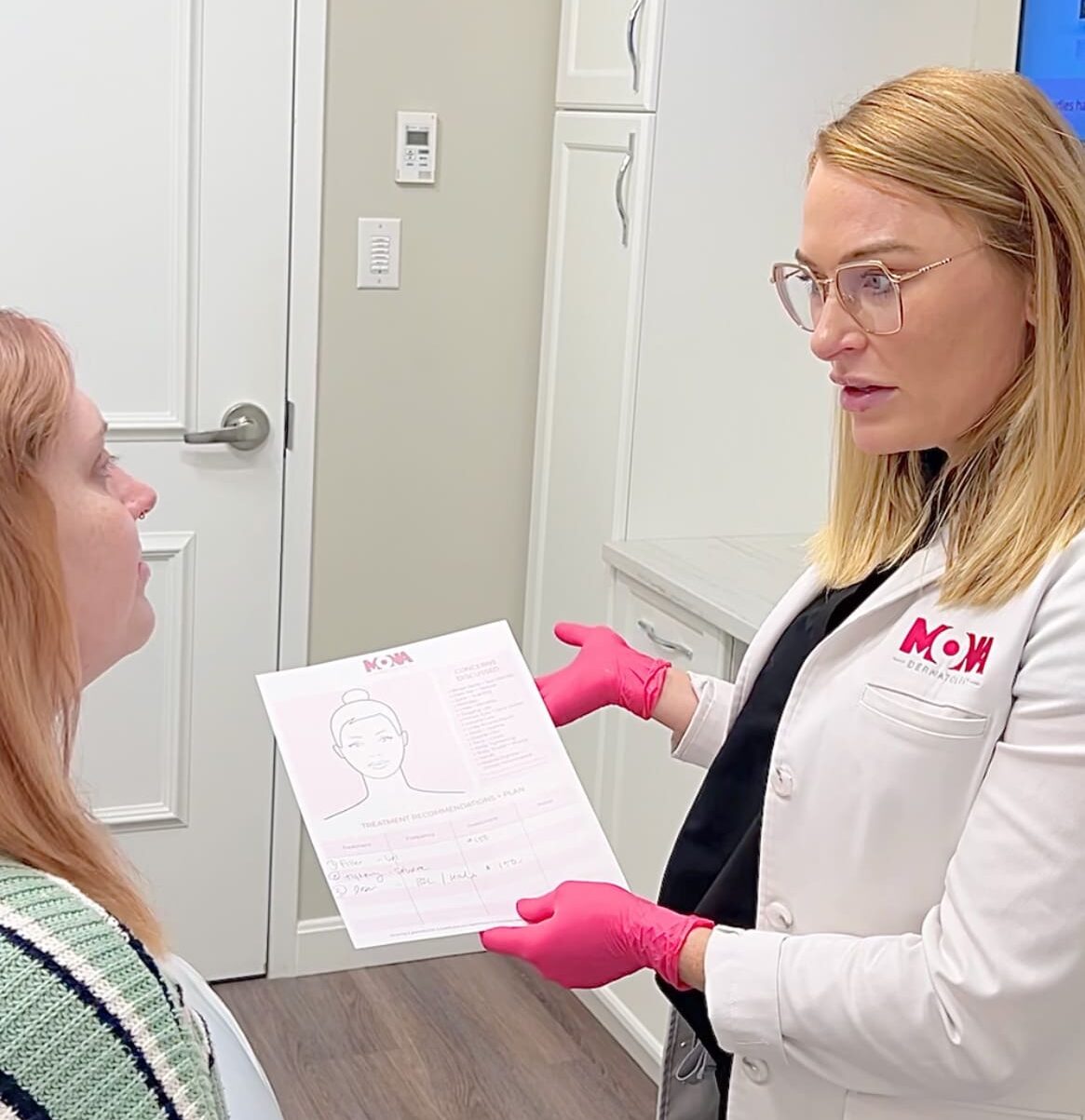Resveratrol Benefits | As Seen in CNN
Dr. Alexandra Bowles expands upon her insights from her recent feature in CNN Underscored: What is resveratrol? Derms explain the benefits of the anti-aging skin care ingredient.
What is resveratrol?
Resveratrol is a naturally occurring compound in certain plants, fruits, and vegetables. It is a type of polyphenol, a category of plant compounds with antioxidant properties. This is often used as a health supplement.
Where does resveratrol come from?
Resveratrol can come from various plants but is particularly abundant in red grapes, wine, berries, peanuts, and dark chocolate. The skins of red grapes are one of the richest sources of resveratrol. It is also found in grape seeds and, to a lesser extent, in grape leaves. Red wine, in particular, contains resveratrol because it is made with the skins of grapes. The fermentation process used in winemaking can concentrate the compound. Certain berries, including blueberries, cranberries, blueberries, dark chocolate, peanuts, and peanut products such as peanut butter, are other sources of resveratrol.
What does resveratrol do for the skin?
Resveratrol offers several potential benefits for the skin, primarily due to its antioxidant and anti-inflammatory properties. For one, resveratrol helps neutralize free radicals, unstable molecules that can cause oxidative stress and damage skin cells. This protection can help prevent premature aging, such as fine lines and wrinkles. Resveratrol also has anti-inflammatory properties, which can help reduce redness, swelling, and irritation. This can be particularly beneficial for acne, rosacea, and eczema. Additionally, by protecting the skin from oxidative damage and supporting the skin’s natural repair processes, resveratrol can help maintain skin elasticity, improve texture, and reduce the appearance of fine lines and wrinkles. Resveratrol can also improve the skin’s barrier function, potentially enhancing moisture retention and preventing dryness.
Retinol is often considered the gold standard anti-aging ingredient. How does resveratrol compare to retinol?
Retinol and resveratrol are effective anti-aging ingredients, but they work in different ways and offer distinct benefits. Retinol is a form of vitamin A that promotes cell turnover and stimulates collagen production. It helps to exfoliate the skin, reduce the appearance of fine lines and wrinkles, and improve skin texture and tone. Retinol is highly effective at reducing the appearance of fine lines, wrinkles, and age spots by accelerating cell turnover and increasing collagen production. It can also help manage acne by preventing clogged pores and reducing excess oil production. In addition, retinol can improve skin texture and smoothness by removing dead skin cells and encouraging the growth of new skin.
Resveratrol is a potent antioxidant that helps protect the skin from oxidative stress and environmental damage. It also has anti-inflammatory properties and can help improve skin tone and brightness. Resveratrol neutralizes free radicals, helping to prevent premature aging and protect the skin from environmental damage. It can reduce redness and irritation, making it beneficial for sensitive or inflammatory skin conditions. Resveratrol can also help improve skin tone and reduce hyperpigmentation, leading to a more even complexion.
Is retinol or resveratrol gentler on skin?
Resveratrol is generally considered more gentle than retinol, especially regarding potential skin irritation and sensitivity. Retinol can be more irritating, especially when first introduced into a skincare routine. Resveratrol is typically well-tolerated by most skin types, including sensitive skin. Its primary function as an antioxidant and anti-inflammatory means it usually doesn’t cause irritation or dryness. Retinol, on the other hand, can cause redness, dryness, peeling, and increased sensitivity to sunlight. This is why it’s important to introduce retinol to the skin slowly.
Are there certain skin types that should use resveratrol over retinol and vice versa?
Depending on their specific needs and concerns, different skin types may benefit more from resveratrol or retinol. For example, resveratrol is generally more gentle and soothing, making it a good option for those with sensitive skin who may experience irritation with more potent ingredients like retinol. Resveratrol can also benefit those with inflammatory skin conditions, such as rosacea or eczema, by helping to reduce redness and irritation without exacerbating these conditions. Furthermore, resveratrol can offer antioxidant protection and mild anti-aging benefits for those in their 20s or early 30s who are looking for preventative anti-aging care without the need for solid actives. Resveratrol’s antioxidant properties can help improve skin tone and brightness if the primary concern is hyperpigmentation or dull skin.
Conversely, Retinol is highly effective for addressing signs of aging, such as fine lines, wrinkles, and loss of firmness. It promotes collagen production and increases cell turnover, making it ideal for mature skin. Retinol can also help manage acne by regulating sebum production and preventing clogged pores. It also helps fade post-acne marks and scars. Retinol can help balance oil production, making it suitable for those with oily or combination skin types. It can effectively treat sun damage, such as age spots and uneven skin texture, due to its ability to accelerate skin cell renewal.
Does resveratrol have any side effects?
Resveratrol is generally considered safe for most people, mainly when used in moderation and as part of skincare products. However, like any active ingredient, it can cause side effects in some individuals. Although rare, some people may experience mild irritation, redness, or itching when using resveratrol products, especially if they have sensitive skin or if the product has a high compound concentration. In rare cases, individuals may have an allergic reaction to resveratrol, resulting in symptoms like rash, hives, or swelling. While not a common side effect, resveratrol could make the skin more sensitive to sunlight. Therefore, it’s always advisable to use sunscreen during the day, especially when using active skincare ingredients.
What is the best way to use resveratrol?
The best way to use resveratrol largely depends on your skin type, the specific product you’re using, and your overall skincare routine. For most people, resveratrol can be used daily. It’s gentle enough to be incorporated into both morning and evening routines. Regular use helps maximize its antioxidant and anti-inflammatory benefits. If you have susceptible skin or are introducing resveratrol into your routine for the first time, you might start by using it a few times a week and gradually increase to daily use as your skin adapts.
Applying resveratrol in the morning can help protect the skin and show many benefits from oxidative stress and environmental damage throughout the day. It pairs well with sunscreen to provide additional protection against UV damage. A simple morning routine can include a cleanser, resveratrol serum, and sunscreen. However, using resveratrol at night is also beneficial, as it can work alongside other nighttime skincare treatments, such as retinol or hydrating serums. The skin’s repair processes are active overnight, allowing resveratrol to enhance anti-aging and repair. A sample evening routine can include a cleanser, a resveratrol serum that can be used alongside other serums or treatments, and a moisturizer.
Can everyone use resveratrol? Should they?
While resveratrol has many potential benefits and is generally considered safe, it may not suit everyone. Whether or not someone should use resveratrol depends on several factors, including their skin type, specific skin concerns, medical history, and overall skincare goals. Patients who may benefit from resveratrol include those seeking antioxidant protection or addressing signs of aging, such as reducing fine lines and skin elasticity or reducing inflammation due to sensitive skin or conditions like rosacea or eczema. However, if you have a known allergy to sources of resveratrol, such as grapes and red wine, or if you have susceptible skin, it’s essential to exercise caution and consider alternatives when using resveratrol.
Should you avoid mixing certain skincare ingredients with resveratrol? If so, what?
While resveratrol is generally well-tolerated and can be combined with many skincare ingredients, there are a few combinations where caution might be advised to prevent potential irritation or reduced efficacy. Ingredients to use with caution include high-strength exfoliants (AHAs/BHAs) such as glycolic acid, salicylic acid, and lactic acid to avoid the risk of skin irritation. Instead, consider using exfoliants in the morning and resveratrol in the evening or alternate days. Other ingredients include retinoids, such as retinol and tretinoin, which can also cause further irritation, vitamin C, and benzoyl peroxide, which may cause skin irritation or reduce the product’s efficacy.
Ingredients that are generally safe to use with resveratrol include hyaluronic acid to moisturize and soothe the skin. niacinamide, to offer anti-inflammatory properties, peptides to support collagen production, and ceramides to help restore and maintain the skin barrier.
Can you experience the skin benefits of resveratrol by consuming foods that contain it?
Consuming foods rich in resveratrol can contribute to overall skin health. Still, the benefits of resveratrol may not be as direct or pronounced as those achieved through topical application of resveratrol in skincare products. Consuming resveratrol-rich foods may help reduce inflammation throughout the body, which can benefit skin conditions related to inflammation, such as acne or rosacea. Resveratrol can improve blood circulation, which may help with skin health by ensuring the skin receives adequate nutrients and oxygen. However, if you’re interested in incorporating resveratrol into your diet, consider these foods. Foods that can help include: red grapes, particularly the skin, which is high in resveratrol; red wine, which contains resveratrol but should be consumed in moderation due to alcohol content; berries, such as blueberries and raspberries, which also contain resveratrol, and dark chocolate, though moderation is critical due to sugar content.
Why do you think resveratrol has blown up on TikTok?
With the evolution of social media, there has been a growing interest in skincare and anti-aging products, particularly among younger audiences. Resveratrol, known for its antioxidant and anti-aging properties, fits well into this trend. Influencers and skincare enthusiasts often play a significant role in promoting products. When influencers with large followings share their positive experiences with resveratrol, it can quickly become a trend. Additionally, the scientific research supporting the potential benefits of resveratrol, such as its antioxidant properties and ability to protect against skin aging, gives it credibility. This scientific backing often appeals to consumers looking for effective skincare solutions.
There is also a growing preference for natural and clean beauty products. Resveratrol, a naturally occurring compound in foods like grapes and berries, aligns with this preference. It is also available in various forms, including serums, creams, and supplements, making it accessible to many consumers. Its inclusion in well-known brands’ product lines also boosts its visibility. TikTok’s format of short, engaging videos allows for quick and visually appealing demonstrations of products. Skincare routines, product reviews, and before-and-after transformations can quickly capture viewers’ attention and encourage them to try new products. TikTok users are often curious and willing to experiment with new products and trends. The platform’s community-driven nature fosters a sense of discovery and experimentation, which can drive interest in new ingredients like resveratrol.
What is your opinion on the resveratrol garnering attention as a ‘youth-preserving’ ingredient?
I think it’s wonderful that people are starting to take more ownership of their skin and really looking into the ingredients of the products they are using. Resveratrol is a great product with antioxidant properties that can help protect the skin from free radicals in the environment that we know lead to aging and thus keep you looking more youthful and refreshed.

